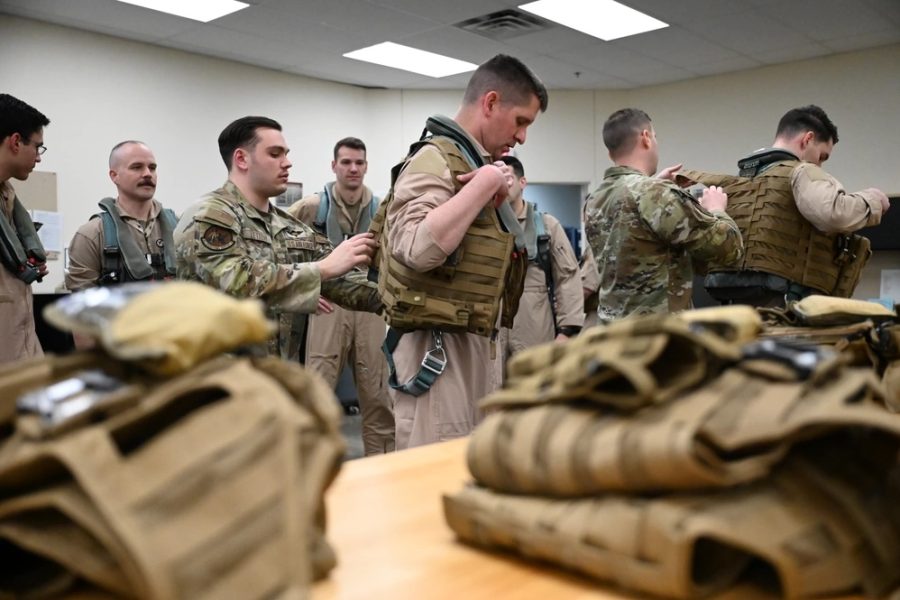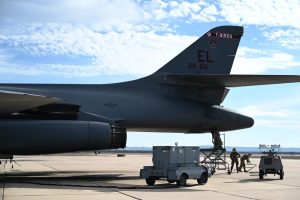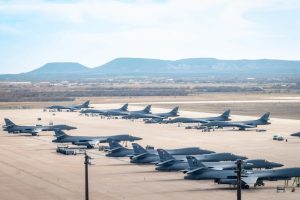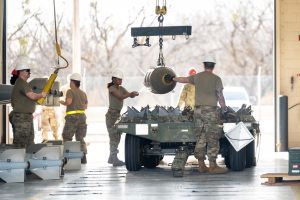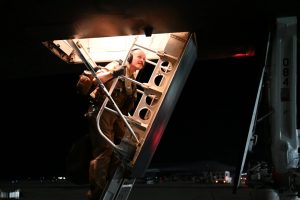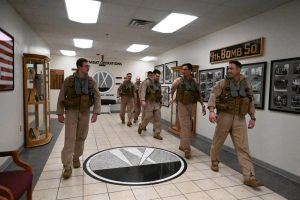The Air Force published a batch of photos and videos this weekend showing B-1B bomber crews preparing for the CONUS-to-CONUS mission that included strikes targeting Iranian-aligned groups in Iraq and Syria on Feb. 2.
The crews and jets are from Ellsworth Air Force Base, S.D., but launched from Dyess Air Force Base, Texas, due to an ongoing investigation closing the runway at Ellsworth after a B-1 crashed there on Jan. 4.
Taking off from Dyess, the B-1s flew nonstop to the Middle East, where, along with fighter aircraft deployed to U.S. Central Command, they dropped more than 125 precision-guided munitions on 85 targets at seven facilities, according to the Pentagon.
The strikes were in response to the Jan. 28 drone attack on Tower 22, a U.S. outpost in northeast Jordan near the border with Syria. Three U.S. Army reservists were killed and at least 47 other troops injured. The group of Iranian-backed militias known as the Islamic Resistance in Iraq claimed responsibility for the attack.
Speaking to reporters Feb. 5, Pentagon press secretary Maj. Gen. Patrick S. Ryder said the targets struck by the B-1s included “command and control operation centers, intelligence centers, rockets, missiles, unmanned aerial vehicle storage and logistics and munitions supply chain facilities.”
“Although we continue to evaluate, we currently assess that we had good effects and that the strikes destroyed or functionally damaged more than 80 targets at the seven facilities,” he added. “The number of casualties is still being assessed.”
Even so, Iran-backed militia groups hit back at least twice, killing six allied Kurdish fighters in eastern Syria on Feb. 4. When asked about the ongoing attacks, Ryder said “our responses are not complete.”
“I’m not going to telegraph or discuss what that may be, other than we’ll conduct that at a time and place of our choosing,” he added.
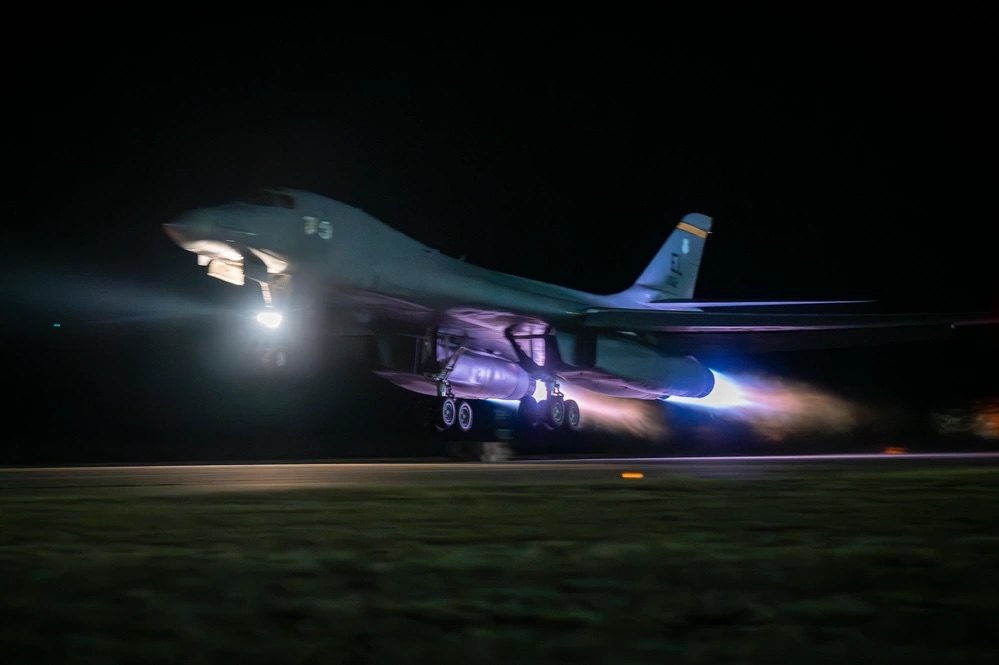
Meanwhile, U.S. and coalition forces also struck multiple areas controlled by Houthi rebels in Yemen, who have launched dozens of attacks on commercial shipping in the Red Sea in recent months. The intent is to “disrupt and degrade” the Houthis’ ability to disrupt shipping through the vital channel, Ryder said.
Since the Israel-Hamas war began in October, Iran-backed militia groups throughout the region have used ballistic missiles and drones to attack U.S. forces scores of times. That includes groups in Iraq and Syria, as well as Hezbollah in Lebanon and Houthi rebels in Yemen.
Whether B-1 crews will make another trip to the Middle East is unclear. For now, Col. Derek Oakley, commander of Ellsworth’s 28th Bomb Wing, seemed pleased with his troops’ performance last week.
“Our Airmen demonstrated once again our ability to conduct long range precision strike missions when tasked to do so,” he said in a press release. “Teaming with our fellow Strikers at Dyess to accomplish the mission is a testament to what we are able to do while further enhancing interoperability and improving our collective readiness.”
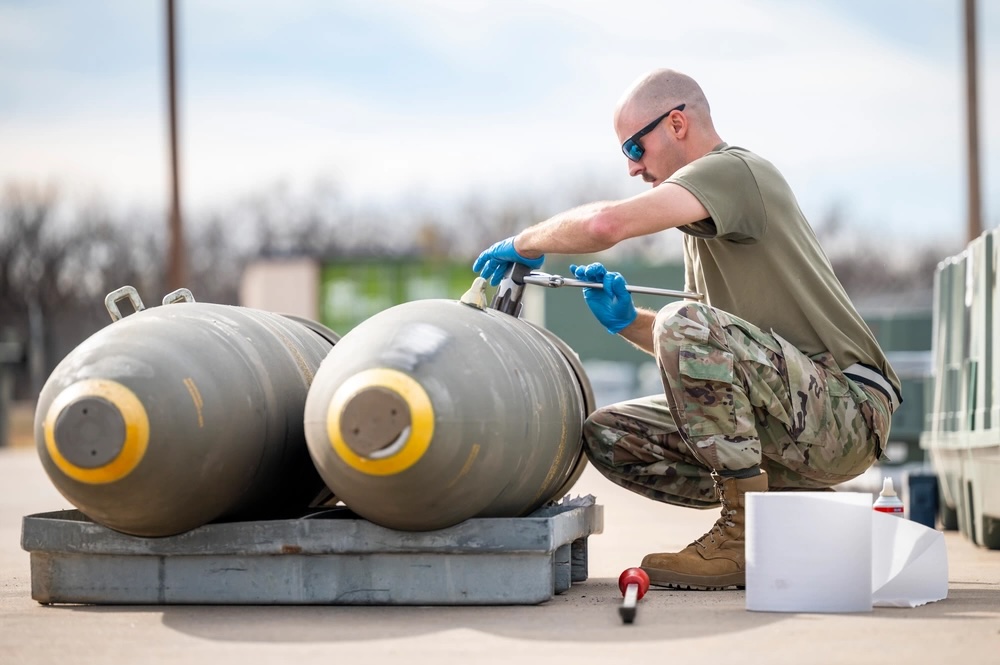
Though it cannot carry nuclear weapons, the B-1B’s three internal weapons bays can carry more guided or unguided weapons than any other Air Force aircraft, including the venerable B-52 Stratofortress. The jet’s four engines can push it over 900 miles an hour, and its swing-wings give it better performance at low speeds while loitering over a battlefield. The crew of four includes an aircraft commander, a copilot, and two combat systems officers who specialize in offensive and defensive systems.
“The mission we conducted validated that we can respond to any threat anywhere on the globe,” Oakley added. “We continuously train and prepare for these types of situations, and we are always ready to answer the call when it comes.”
